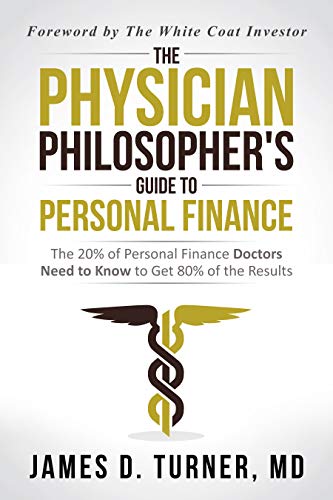Back in May, I had the chance to sit down with The Physician Philosopher’s Guide to Personal Finance: The 20% of Personal Finance Doctors Need to Know to Get 80% of the Results.

The Pareto approach is a good conceit and is most of what people need. Real personal finance for most people is two things: simple and behavioral. Save a significant amount of your income by living on less than you earn and then do something really boring with it. Then, stay the course no matter what.
Add in bits about how important it is to buy own-occupation disability insurance from a reputable agent (like these folks, who I recommend) and term (not whole) life insurance, and that’s the meat of the book.
My main beef, unsurprisingly, is the chapters dedicated to student loans. One, there are some factual inaccuracies (e.g. about eligibility criteria for the PAYE program, the fraction of physician jobs that qualify for PSLF, the common misconception that losing a partial financial hardship in IBR or PAYE boots you out of IDR and into the standard plan [it doesn’t, the payments just cap at that amount]), and the notion that all doctors should leave REPAYE after training and switch to PAYE in order to minimize payments [it depends!].
Two, the Pareto principle applies well to most people’s retirement finances but less well to nitty-gritty loan details, especially once you get into PSLF-territory. For the former, there is no evidence that a complicated portfolio outperforms a simple one when it comes to your investment accounts. As author Rick Ferri recently advised on the White Coat Investor podcast:
Regarding your portfolio: make it simple, make it automated, and just let it do its thing. Don’t touch it. That’s the best financial advice I can give. Simplicity, automation, hibernation.
But, there can be a big difference with small details when it comes to loans, which can easily change result in swings of tens to hundreds of thousands of dollars. I see what should be simple mistakes cost thousands constantly. Technicalities are the lifeblood of the system, but I do agree with TPP’s overall thrust though. Luckily, there’s a free book that knocks that particular topic out of the park.
Overall Jimmy is a solid writer and the book is readable and reasonably concise. The first editions of my books had small errors too (okay, I’m sure they all still do–I’m a very fallible human). The beauty of self-publishing is that Jimmy has probably already fixed the errata I found.
It’s a solid book for students, residents, and early career physicians. Just please supplement for loan management.
One Comment